How to Fertilize Fruit Trees in Spring: Essential Tips for a Bountiful Harvest
- April 12, 2024
- 0 comment
Unlock the secrets to a bountiful harvest with tips on how to fertilize fruit trees in spring. Master the art of timing, methods, and essential nutrients. Spring brings a crucial time for cultivating fruit trees, and proper fertilization is key to unlocking their full potential. This season of growth requires not only an understanding of the specific needs of your fruit trees but also the strategic application of the right nutrients at the right time. This guide provides comprehensive advice on the best fertilization practices to enhance the health and productivity of your orchards.
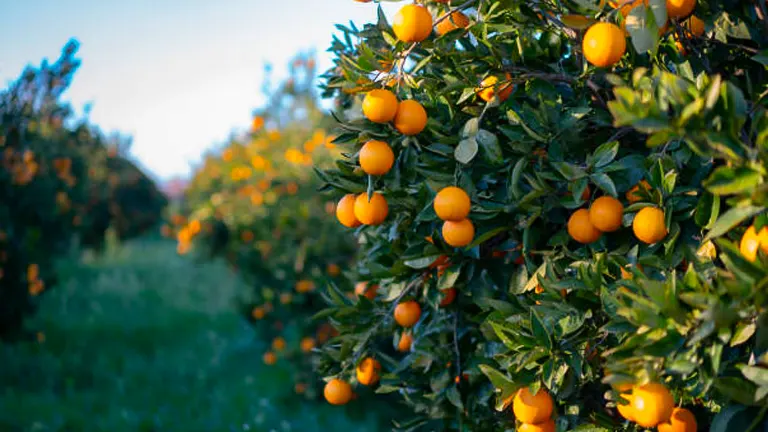
From the timing and frequency of applications to choosing the correct fertilizers for various fruit species, you’ll learn everything necessary to ensure your trees flourish. Equip yourself with the knowledge to apply these nutrients effectively, and prepare to enjoy a lush, bountiful harvest that rewards your efforts with rich, vibrant fruits. Whether you are tending to young saplings or mature trees, these insights will help you optimize their spring care routine for the best possible outcomes.
Table of Contents
- Best Fruit Trees to Fertilize in Spring
- Understanding Your Fruit Trees Nutritional Needs
- Timing and Frequency of Fertilization
- Choosing the Right Fertilizer
- Step-by-Step Guides on How to Fertilize Fruit Trees in Spring
- Monitoring and Adjusting After Fertilization
- Conclusion
- FAQs
Best Fruit Trees to Fertilize in Spring

Understanding the specific fertilization needs of different types of fruit trees is critical for optimizing their health and productivity in the spring. The nutrient requirements vary not only with the type of tree but also with their developmental stage and existing soil nutrient levels.
Detailed Nutrient Profiles and Fertilization Strategies
1. Apple Trees (Malus domestica)
- Optimal Fertilization Period: Early spring as the buds swell.
- Key Nutrients:
- Nitrogen (N): 70-100 g/tree N to promote vigorous growth and support extensive leaf and branch development.
- Calcium (Ca): 150-200 mg/kg soil to improve cell wall strength and fruit firmness, reducing disorders like bitter pit.
- Application Tips: Apply a nitrogen-heavy fertilizer (e.g., urea or ammonium nitrate) evenly under the canopy, avoiding proximity to the trunk to prevent root burn.
2. Peach Trees (Prunus persica)
- Optimal Fertilization Period: Just before bud break.
- Key Nutrients:
- Phosphorus (P): 40-60 g/tree P to promote root development and enhance bloom vigor.
- Potassium (K): 50-70 g/tree K to support fruit quality and resistance to diseases.
- Application Tips: Use a balanced N-P-K fertilizer like 10-10-10 to encourage healthy tree growth and fruit development.
3. Cherry Trees (Prunus avium)
- Optimal Fertilization Period: Early spring, as buds begin to develop.
- Key Nutrients:
- Potassium (K): 60-80 g/tree K to improve fruit size, quality, and tree vigor.
- Boron (B): 2-3 g/tree B to aid in effective fruit set and reduce fruit cracking.
- Application Tips: Potassium sulfate can be used to avoid adding chloride, which can be harmful to cherry trees.
4. Plum Trees (Prunus domestica)
- Optimal Fertilization Period: Early spring, during bud swell.
- Key Nutrients:
- Phosphorus (P): 40-60 g/tree P to support the development of root systems and blooms.
- Nitrogen (N): 50-70 g/tree N to promote overall tree growth and fruit development.
- Application Tips: Fertilizers rich in phosphorus, like bone meal, are preferred early in the season to enhance bloom development and fruit setting.
5. Citrus Trees (Citrus)
- Optimal Fertilization Period: Spring, although mild applications can be beneficial throughout the year.
- Key Nutrients:
- Nitrogen (N): 100-150 g/tree N, applied in split applications.
- Micronutrients: Iron (Fe), Zinc (Zn), and Manganese (Mn) are crucial, especially in alkaline soils.
- Iron (Fe): 50-100 mg/kg soil to prevent chlorosis.
- Zinc (Zn): 30-50 mg/kg soil to correct deficiency symptoms such as little leaf or rosetting.
- Application Tips: Micronutrients should be applied foliarly for quick absorption where soil applications may not be effective.
Scientific Table
| Tree Type | N (g/tree) | P (g/tree) | K (g/tree) | Ca, Mg, & Micronutrients (mg/kg or g/tree) | Optimal Application Time |
|---|---|---|---|---|---|
| Apple | 70-100 | 20-30 | 50-70 | Ca: 150-200, Mg: 50-70 | Early spring (bud swell) |
| Peach | 50-75 | 40-60 | 50-70 | Ca: 100-150, Mg: 30-50 | Just before bud break |
| Cherry | 40-60 | 20-30 | 60-80 | K: 60-80, B: 2-3 | Early spring |
| Plum | 50-70 | 40-60 | 30-50 | P: 40-60 | Early spring (bud swell) |
| Citrus | 100-150 | 30-50 | 40-60 | Fe: 50-100, Zn: 30-50, Mn: 20-30 | Spring (flexible timing) |
Benefits of Spring Fertilization
- Enhanced Fruit Set and Quality: Proper nutrient management ensures high-quality fruit production with improved size, taste, and nutritional content.
- Increased Disease and Pest Resistance: Adequate fertilization enhances the trees’ natural defenses, reducing the incidence of diseases and pest infestations.
- Improved Overall Tree Vitality: Nutrient-rich fertilization practices promote vigorous growth and longevity, ensuring the trees’ health and productivity for years to come.
Understanding Your Fruit Trees Nutritional Needs
Nutrient Requirements
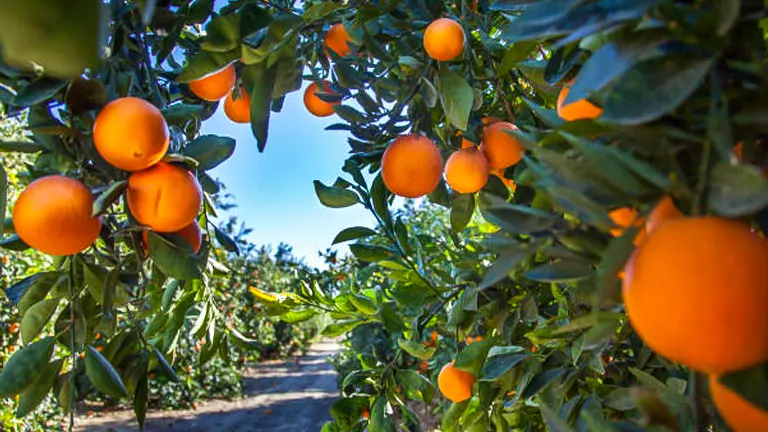
To foster optimal growth and fruit production, understanding the macro and micronutrient needs of your fruit trees is crucial:
- Macronutrients:
- Nitrogen (N): Essential for leaf and stem growth; nitrogen should be applied carefully to avoid excessive vegetative growth at the expense of fruit production.
- Phosphorus (P): Supports root development and flowering; critical for young trees and during the flowering stage.
- Potassium (K): Aids in fruit quality and disease resistance; important throughout the growing season but especially as fruits begin to develop.
- Micronutrients:
- Calcium (Ca): Vital for cell wall development and fruit stability.
- Magnesium (Mg): Promotes chlorophyll creation, which is essential for photosynthesis.
- Zinc (Zn): Necessary for hormone balance and internode elongation.
- Iron (Fe): Crucial for the synthesis of chlorophyll and overall plant metabolism.
Symptoms of Nutrient Deficiency
Recognizing signs of nutrient deficiency early can help prevent long-term damage to fruit trees:
- Nitrogen Deficiency: Yellowing (chlorosis) of older leaves, poor growth, and reduced fruit size.
- Phosphorus Deficiency: Darker than normal green leaves, stunted growth, and delayed maturation.
- Potassium Deficiency: Leaf edges turn brown and crispy, fruits are small and poor in taste.
- Calcium Deficiency: Blossom end rot in fruits, new leaves are misshapen or necrotic.
- Magnesium Deficiency: Older leaves show interveinal chlorosis, leaf tips may curl and die.
- Zinc Deficiency: Leaves become smaller and may curl; stunted tree growth.
- Iron Deficiency: Yellowing occurs between the green veins of new leaves, leaving a web-like green pattern.
Adjusting Fertilization Based on Tree Age and Soil
- Young Trees: Require more phosphorus to encourage root growth but less nitrogen to avoid excessive vegetative growth.
- Mature Trees: Need higher nitrogen levels to support their larger canopy and potential fruit yield.
- Soil Testing: Conduct soil tests every 2-3 years to gauge nutrient levels and pH, which influences nutrient availability. Adjust fertilizer types and amounts based on these results to maintain a balanced soil ecosystem optimal for fruit production.
Timing and Frequency of Fertilization
Optimal Fertilizing Times
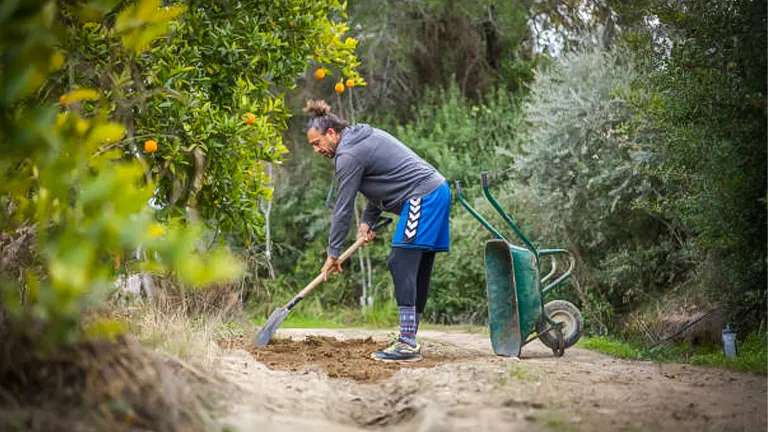
Timing your fertilization efforts is key to maximizing the health and output of your orchard:
- Early Spring (Bud Break): Apply a balanced fertilizer to support initial growth as trees exit dormancy.
- Post-Bloom: Once flowers have faded, introduce a higher nitrogen mix to promote leaf and branch development ahead of fruit setting.
- Mid-Season Boost (Optional): For trees showing less vigor or in nutrient-poor soils, a mid-season application can help sustain growth through to harvest.
Fertilization Schedule
- Regular Feedings: Depending on the tree species and the fertilizer type, applications might need to be monthly or bi-monthly. Always refer to specific product guidelines and local agricultural recommendations.
- Slow-Release Formulas: Consider using slow-release fertilizers that nourish trees over several months, which helps mitigate nutrient runoff and provides a steady supply of nutrients.
Weather and Environmental Considerations
- Weather Conditions: Avoid fertilizing before heavy rain forecasts to prevent wash-off.
- Local Climate: Tailor your fertilizing strategy to the local climate—warmer areas may require earlier spring fertilization to coincide with earlier bud breaks.
Choosing the Right Fertilizer
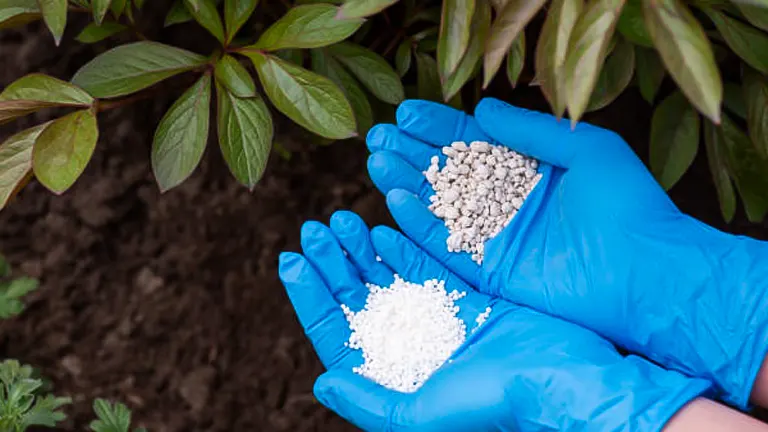
Selecting the appropriate fertilizer is critical for ensuring your fruit trees get the nutrients they need without excess that could potentially harm them. Fertilizers are generally categorized into organic and synthetic types, each with its advantages and ideal use cases.
- Organic Fertilizers such as compost, manure, or bone meal are derived from natural sources and are beneficial for improving soil structure along with providing nutrients. They release nutrients slowly, reducing the risk of over-fertilization and providing a long-term improvement to soil health. This type of fertilizer is especially beneficial in the spring when trees are developing roots and need access to nutrients at a gradual pace.
- Synthetic Fertilizers, on the other hand, offer nutrients in a more controlled, predictable manner. They can be customized to provide specific ratios of nitrogen, phosphorus, and potassium, which are essential during the rapid growth phase of fruit trees in spring. Formulations such as 10-10-10 or 20-20-20 are commonly used to promote balanced growth, but the exact formulation you choose should be guided by the results of a soil test and the particular needs of your fruit trees as identified in earlier sections.
When applying fertilizer, it is crucial to follow a method that ensures even distribution and avoids concentration around the tree’s trunk, which can lead to root burn. Broadcasting granules over the root zone but not against the trunk, using spikes placed at the drip line, or applying liquid fertilizer with a drip irrigation system are all effective methods that help avoid common pitfalls.
Step-by-Step Guides on How to Fertilize Fruit Trees in Spring
Step 1: Timing Your Fertilization
- Apply the first round of fertilizer as the buds begin to swell, signaling the end of dormancy. This initial application supports the emerging growth.
- The second application should occur just after the petals fall. This stage is crucial as the trees set fruit and require additional nutrients to support the growing fruit.
Step 2: Choosing the Right Fertilizer
- Type of Fertilizer:
- Granular Fertilizers: Slow-release granules are ideal for prolonged nutrient release.
- Liquid Fertilizers: Fast-acting and effective, particularly for quick absorption needs.
- Nutrient Balance: Opt for a balanced N-P-K ratio like 10-10-10 unless soil tests indicate otherwise. Adjust the formula based on specific tree needs and soil deficiencies.
Step 3: Preparing to Fertilize
- Conduct a soil test to determine existing nutrient levels and pH balance. Tailor your fertilizer choice based on these results.
- Follow the manufacturer’s recommendations based on the age and size of your trees. Generally, young trees require less fertilizer than mature ones.
- Gather Equipment:
- For granular: Spreader or hand-held broadcaster.
- For liquid: Soil injector, watering can, or sprayer.
Step 4: Applying the Fertilizer
- Granular Fertilizer:
- Spread Evenly: Distribute the granules evenly under the tree canopy, extending to the drip line but avoiding a 5-inch radius around the trunk to prevent root burn.
- Water It Down: After applying, water the area thoroughly to help the granules break down and facilitate nutrient absorption.
- Liquid Fertilizer:
- Direct Application: Use a soil injector or watering can to apply the liquid directly to the root zone, which can be more efficient and reduce waste.
- Coverage: Ensure the liquid is spread evenly across the root area, not just around the trunk.
Step 5: Post-Application Care
- Proper hydration helps integrate fertilizer into the soil and is crucial especially if rainfall is not adequate.
- Apply organic mulch around the base to help retain moisture, regulate soil temperature, and reduce weed competition.
Step 6: Safety and Environmental Considerations
- Wear gloves, a mask, and protective eyewear, especially when handling synthetic fertilizers to avoid skin irritation and inhalation of chemicals.
- Avoid fertilizing right before heavy rains to prevent runoff and nutrient loss. Ideal conditions are calm and dry.
Step 7: Observe Tree Health
- Look for signs of growth improvement or any symptoms of nutrient overdose (such as leaf burn or excessive growth).
- Depending on tree response and seasonal conditions, adjust the amount, type, or frequency of fertilizer applications.
Monitoring and Adjusting After Fertilization
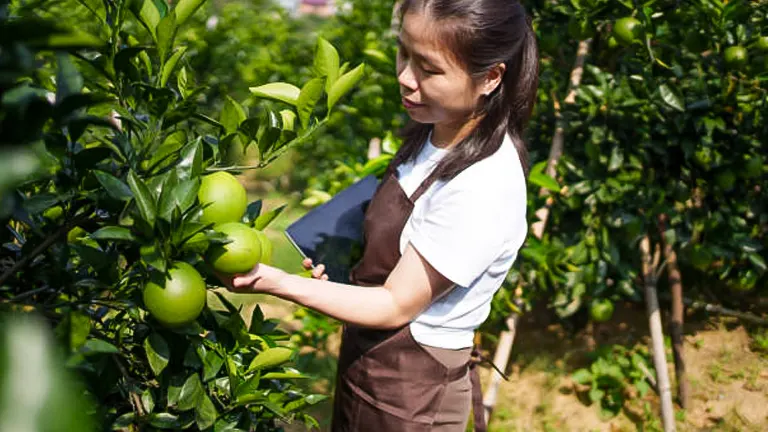
After fertilizing your fruit trees, meticulous monitoring and timely adjustments are crucial to ensure optimal nutrient uptake and to promote healthy, vigorous growth throughout the season. This phase is vital for adjusting your care practices based on the trees’ responses to the fertilization.
Observing Tree Response
In the weeks following fertilizer application, observe your trees closely to identify signs of effective fertilization or nutrient deficiencies. Key indicators to watch include:
- Leaf Color and Health
- Ideal Response: New leaves should exhibit a vibrant, deep green color, indicating sufficient nitrogen and iron absorption.
- Problem Signs: Pale or yellow leaves typically suggest a deficiency in nitrogen or iron.
- Leaf Size and Vigor
- Healthy Growth: Leaves should be full-sized and robust, which signifies adequate uptake of phosphorus and potassium.
- Growth Issues: Stunted or small leaves can indicate that the tree is not receiving enough of these essential nutrients.
- Blossom and Fruit Development
- Optimal Development: Strong blossom retention and proper fruit size are signs of good nutritional balance and adequate fertilization.
- Fertilization Issues: Weak blossom retention or undersized fruits often result from insufficient or imbalanced fertilization.
These observations are critical as they guide the necessary adjustments in your fertilization regimen to address any signs of distress or imbalance.
Soil Testing Follow-up
Conducting a soil test approximately 6 weeks after fertilizing can provide a detailed analysis of soil nutrient levels and pH, which are essential for making informed adjustments:
- Nutrient Availability: This test reveals the concentrations of various essential nutrients and whether additional supplementation is necessary.
- pH Level Adjustments:
- Raising pH: If the soil is too acidic, applying garden lime can help to increase the pH and improve nutrient availability.
- Lowering pH: If the soil is too alkaline, sulfur can be used to decrease the pH to an optimal level for nutrient uptake.
Adjusting Practices Based on Observations
Based on your observations and the results of the soil test, make the following adjustments:
- Fertilization Frequency and Quantity
- Over-fertilization Signs: Lush, vigorous foliage with little to no fruit suggests the need to reduce the frequency or amount of fertilizer.
- Under-fertilization Signs: Poor growth and fruit development indicate that it may be necessary to increase the frequency or quantity of fertilizer applications.
- Fertilizer Type Modification
- Identifying Needs: Switch to a different type of fertilizer if specific nutrient deficiencies are evident. For example, if fruit quality is poor and potassium levels are low, switching to a high-potassium fertilizer may help.
Integrated Pest Management (IPM)
Implementing IPM practices can significantly improve the health and yield of your fruit trees by effectively managing pest and disease pressures:
- Regular Tree Inspections: Regularly check your trees for signs of pests and diseases. Early detection is crucial for effective management.
- Targeted Treatments: Use treatments specifically targeted to the pests or diseases present. This approach helps avoid the unnecessary use of broad-spectrum pesticides, reducing the impact on beneficial organisms and the environment.
Monitoring and Adjustment Table
| Indicator | Healthy Sign | Problem Sign | Action Required |
|---|---|---|---|
| Leaf Color | Deep green | Pale or yellow | Adjust nitrogen or iron levels |
| Leaf Size and Vigor | Full-sized and robust | Small and stunted | Increase phosphorus and potassium supplementation |
| Blossom Retention | Strong retention, healthy fruit size | Poor retention, small fruit size | Balance fertilization; consider micronutrient levels |
| Soil pH | 6.0-7.0 (ideal range) | Below 6.0 or above 7.0 | Apply lime to raise pH, sulfur to lower pH |
By carefully monitoring the responses of fruit trees to initial fertilization and making informed adjustments, gardeners can significantly enhance tree health and productivity. Regular soil tests, targeted nutrient management, and integrated pest control form a holistic approach to orchard management that promotes vibrant growth and a bountiful harvest.
Related Post
- How to Fertilize a Mango Tree Effectively: Tips and Tricks for Healthy Growth
- How to Fertilize Apple Trees: Essential Tips for a Bountiful Harvest
- How to Fertilize Lemon Trees: Secrets for Thriving Citrus
- How to Fertilize Avocado Tree: A Step-by-Step Guide for Lush Growth
Conclusion
Fertilizing fruit trees in spring is a vital practice that supports their growth, health, and productivity. By understanding the specific needs of your fruit trees, choosing the right fertilizer, applying it correctly, and continuously monitoring and adjusting your practices, you can maximize your orchard’s output and enjoy a bountiful harvest.
FAQs
- What is the best time of day to fertilize fruit trees in spring?
Early morning or late afternoon is ideal for fertilizing fruit trees. This timing helps avoid the strong sun and heat of midday which can cause the fertilizer to evaporate or run off before it benefits the trees. - Can I use the same fertilizer for all types of fruit trees?
While a general-purpose balanced fertilizer (such as 10-10-10) can benefit most fruit trees, specific types may need a different nutrient balance to address their unique needs. For example, citrus trees often require higher nitrogen and micronutrients compared to apple trees. - How do I know if I’m over-fertilizing my fruit trees?
Signs of over-fertilization include salt buildup in the soil, leaf burn (browning edges), excessively lush foliage with little to no fruit production, and weak, spindly growth. If you notice these symptoms, reduce the amount of fertilizer and increase watering to flush out excess nutrients. - What should I do if it rains shortly after I apply fertilizer?
If heavy rain is expected shortly after application, it’s best to delay fertilizing until after the rain. If it rains unexpectedly soon after application, consider re-applying a reduced amount of fertilizer, especially if you notice runoff. Always check the soil to gauge if additional nutrients might still be necessary. - Is it necessary to fertilize young fruit trees differently than mature ones?
Yes, young fruit trees generally require fertilizers higher in phosphorus to encourage good root development, whereas mature trees benefit more from nitrogen to promote fruit production and potassium for overall health and disease resistance. - Can mulching replace the need for fertilizers?
Mulching can significantly benefit fruit trees by retaining moisture, regulating soil temperature, and adding organic matter as it decomposes. However, while mulch provides some nutrients, it usually does not replace the need for fertilization entirely, especially for nutrient-hungry young trees or in nutrient-depleted soils. - How should I apply granular fertilizer to avoid damage to the fruit tree roots?
Granular fertilizers should be applied around the drip line of the tree rather than near the trunk to avoid root burn. The drip line is the area directly located under the outer circumference of the tree branches. Apply evenly and rake lightly into the upper soil layers, followed by adequate watering to help dissolve the granules. - What are the risks of using synthetic fertilizers on fruit trees and how can I mitigate them?
Synthetic fertilizers can lead to nutrient runoff, soil chemistry imbalances, and potential root damage if used excessively. To mitigate these risks, use slow-release formulas that provide steady nutrient release, apply them as directed without exceeding recommended amounts, and ensure the soil is moist when applying them to enhance absorption and reduce runoff.
Embrace spring by fertilizing your fruit trees wisely, paving the way for a season filled with abundant harvests. Happy gardening!

Benjamin Brooks
Forestry AuthorGreetings! I'm Benjamin Brooks, and my journey over the past 15 years has revolved around the fascinating realms of content creation, expertise in snow clearing, and the intricate world of lumberjacking and landscaping. What began as a simple curiosity about the natural world and heavy machinery has evolved into a passionate profession where my love for crafting words intertwines seamlessly with my lumberjacking and garden skills.


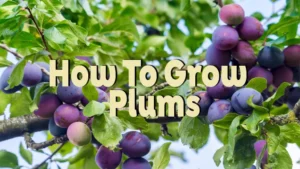










Leave your comment